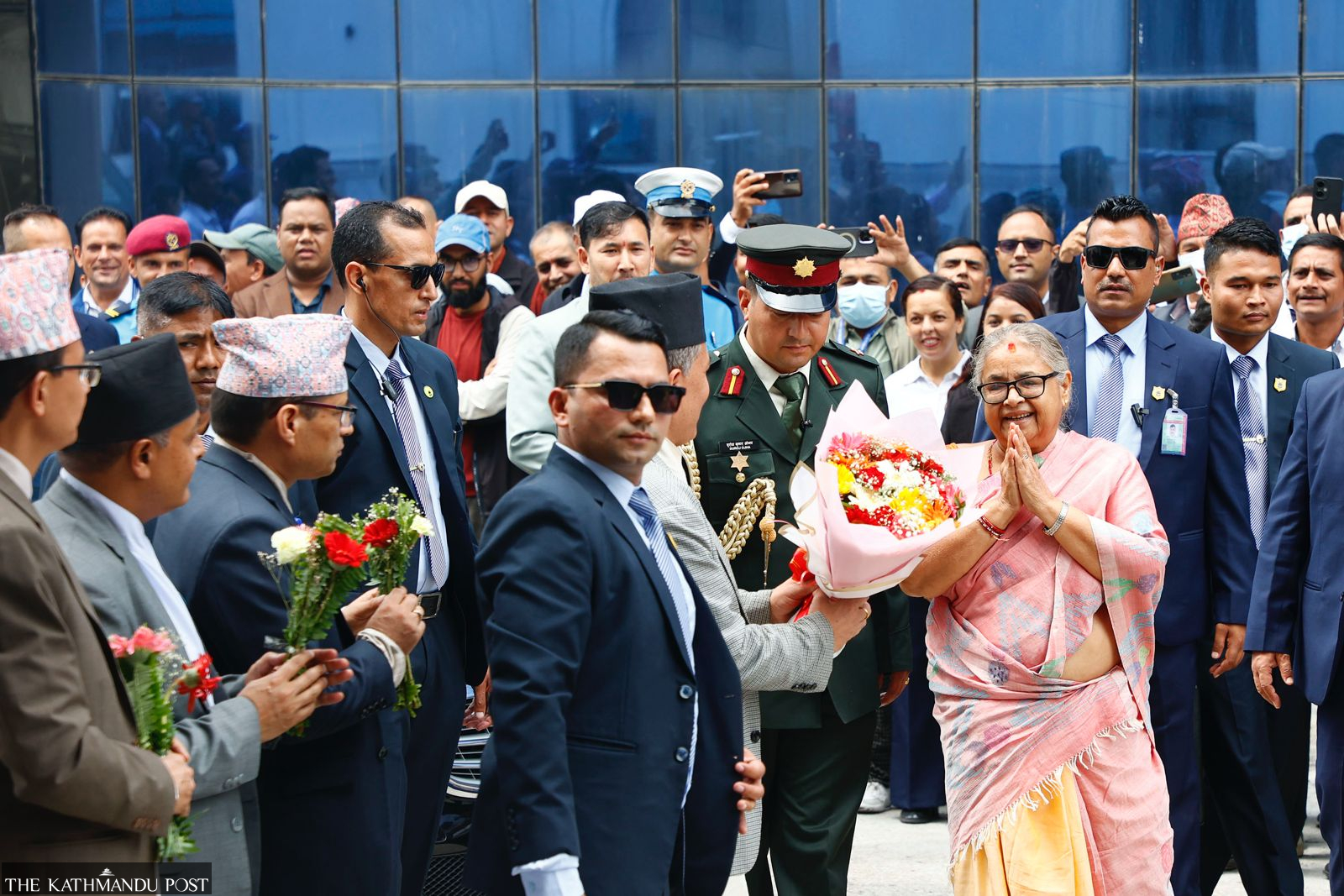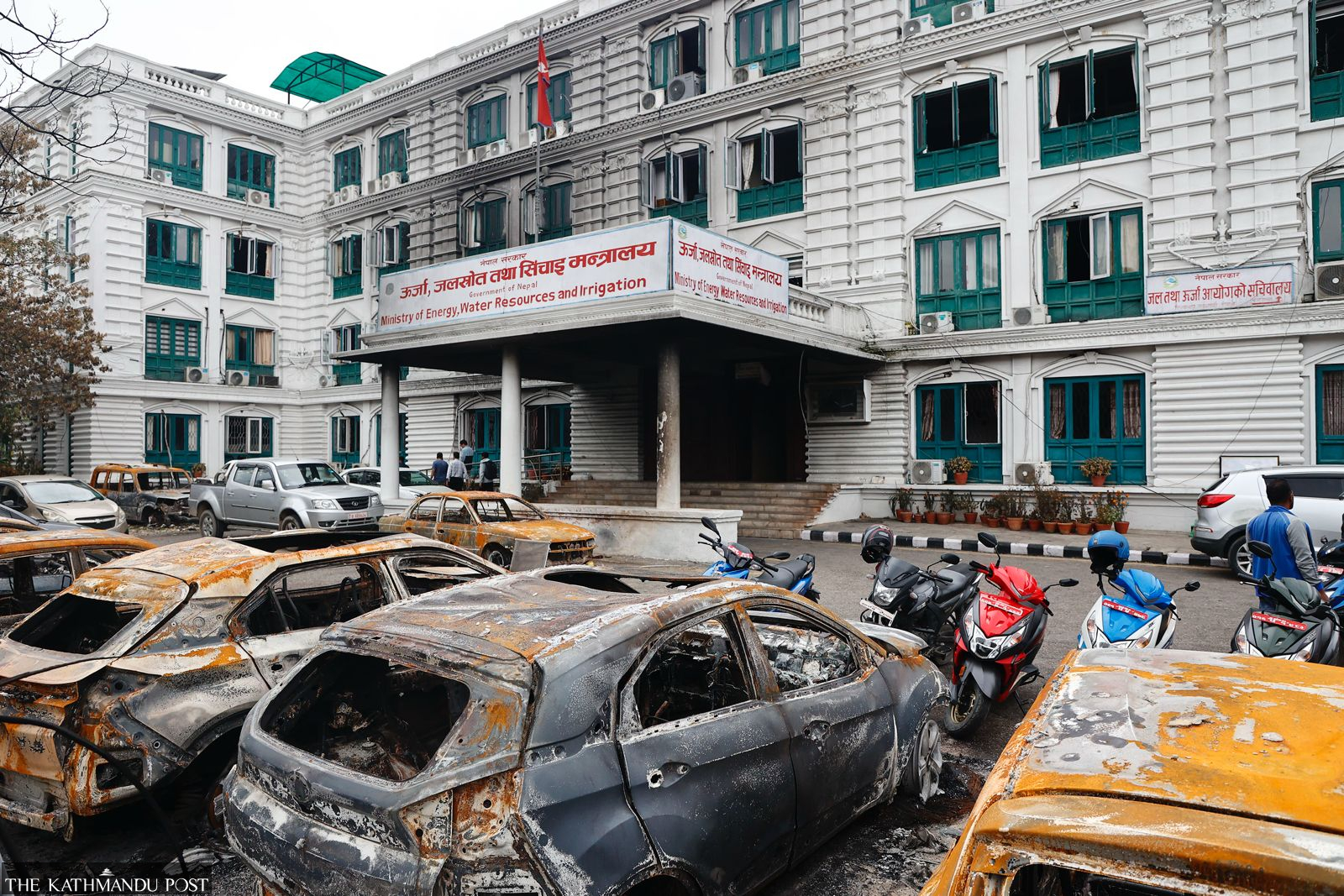National
Some services resume as new PM takes charge
Supreme Court and finance ministry restart operations, some ministries that sustained severe damage relocate.
Binod Ghimire
Nepal’s vital institutions that were reduced to ashes during the Gen Z-led anti-corruption protests, have resumed services on Sunday.
Two days after being appointed the interim government’s prime minister, Sushila Karki formally assumed her office in Singha Durbar. She announced a payment of a million rupees each to the families of the deceased, while also declaring them martyrs.
During the protests, demonstrators set fire to the Prime Minister’s Office and several other ministries. Karki started her work from one building on the Singha Durbar premises that was spared. After assuming office, she vowed to carry out the responsibilities she had been given and sought support for the same. She suggested that the arson and destruction during the protests could have been premeditated, and said everything will be investigated.
“I feel it was done in a planned way as part of a conspiracy. All acts will be investigated. Nobody involved will be spared,” she said, asking the bureaucracy to work effectively and efficiently.
According to Chief Secretary Eknarayan Aryal, assessment of the destruction caused by arson and vandalism will begin soon, and a reconstruction plan will be devised accordingly. “A large number of infrastructures have been destroyed. It will take some time to take stock of the damage,” he said.
Even as the damage assessment is yet to begin, different agencies have resumed their services. The Supreme Court that has been reduced to ashes, started its service by providing deferral notices of hearings to petitioners. Court staff have set up tents on the court premises to provide their services. However, due to lack of proper space, hearings have yet to resume and could take a few more days, according to court officials.

The Ministry of Finance, which was not severely damaged, has resumed its operations. Tanka Prasad Pandey, the spokesperson at the ministry, said they have started releasing payments from the state treasury. “Revenue collection also has resumed from today [Sunday],” he said.
The ministries that were severely damaged, however, are yet to resume their services. The Ministry of Education, for instance, is planning to resume work from Keshar Mahal, where it was stationed until the 2015 earthquake. Similarly, the Ministry of Health and Population is planning to start service from the National Health Research Council.
“Fire has gutted everything. There’s nothing left,” said Dr Navaraj Joshi, an official at the ministry. He said the ministry was looking for a place from where it can resume services.
The Gen Z protest that began on September 8 turned violent after 20 youths were killed in indiscriminate police firings. The next day, protesters not only torched the houses of then Prime Minister KP Sharma Oli and other leaders, but also seized control of properties under the legislature, judiciary and executive. They first took control of the New Baneshwar-based federal parliament building and set it on fire.

Within hours, the crowd swelled and spread to different locations. They broke the western gate of Singha Durbar and entered the country’s main administrative building, and set several ministries, including the Prime Minister's Office, ablaze. The Ministry of Education, Science and Technology and Ministry of Health and Population were among the top administrative buildings torched.
Protesters also vandalised dozens of vehicles parked inside Singha Durbar. The fires from the September 9 arson were doused by Kathmandu Metropolitan City’s fire bridge on Sunday.
Along with the national properties in Singhadurbar and surrounding areas, protestors burned Bhainsepati-based ministerial quarters. Vandalism and arson that began early morning on September 9 continued in some places into the next day.
The office of the Commission for Investigation on Abuse of Authority, Kathmandu’s District Administrative Office; and dozens of police stations were also set on fire, one after another. Also torched were the offices of the Civil Aviation Authority, Department of Roads, and Citizen Investment Trust. Banks and shopping malls were not spared either.




 10.12°C Kathmandu
10.12°C Kathmandu













%20(1).jpg&w=300&height=200)

